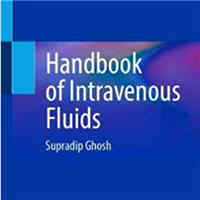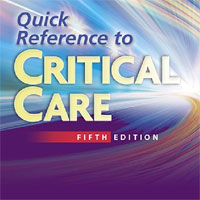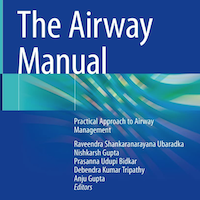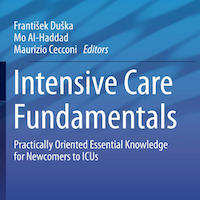
Discharge Instructions for VTE: A Comprehensive Approach to Medication Management
Discharge instructions for VTE have typically included medication management recommendations related to the use of warfarin. In recent years, however, a growing number of alternatives to warfarin, such as direct oral anticoagulants... read more

What Is PICS and How Does it Affect Patients and Families
Every year, about 6 million people are admitted to intensive care units with a life-threatening illness. As medical technology advances, more people survive conditions that once would have been fatal. However, about half... read more
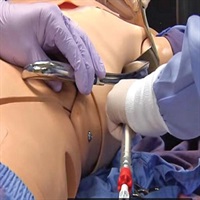
A Cool Way to Save Trauma Patients
Laboratory research like Dr. Alam's has helped to provide answers to some of these questions and demonstrated the feasibility of rapidly inducing hypothermia for exsanguinating trauma. Assuming that the pilot trial and... read more

Model Identifies Seizure Risk in Critically Ill
For critically ill patients, a model comprising six variables can identify the probability of seizure, according to a study published online Oct. 9 in JAMA Neurology. Aaron F. Struck, M.D., from the University of Wisconsin... read more

An Interprofessional Quality Improvement Initiative to Standardize Pediatric Extubation Readiness Assessment
An interprofessionally developed respiratory therapist–led extubation readiness protocol can be successfully implemented in a busy tertiary care PICU without adverse events. We analyzed data from 398 mechanically ventilated... read more

Importance of Second Antibiotic Doses in ED Sepsis Patients
Most studies evaluating early antibiotic administration in sepsis patients focus on timing of the first dose. We highlight many of these studies in our recent review article on Appropriate Antibiotic Therapy in Emergency... read more

Pressure on NHS Intensive Care at Highest Level Since 2010 Swine Flu Pandemic
Pressures in intensive care units are at their highest level since the 2010 swine flu pandemic,with wards regularly having no spare beds, senior doctors have warned. Figures reported by the NHS this winter show that two-thirds... read more

The Case of the Relative Insufficiency
When it comes to the efficacy of glucocorticoid therapy for the treatment of septic shock, we have existed in a state of ambiguity, torn between the results of two contradictory RCTs. The first, the Annane et al trial published... read more

Is Fever the Normal Temperature of Sepsis
We know that hypothermia in sepsis is associated with increased mortality but other than that we tend to see fever in sepsis as something bad. We tend to perceive sepsis patients as more sick the more the temperature is elevated.... read more

Pooled analysis of higher versus lower blood pressure targets for vasopressor therapy septic and vasodilatory shock
Targeting higher blood pressure targets may increase mortality in patients who have been treated with vasopressors for more than 6 h. Lower blood pressure targets were not associated with patient‑important adverse events... read more
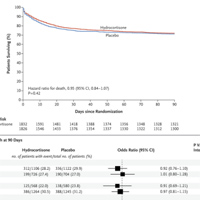
Adjunctive Glucocorticoid Therapy in Patients with Septic Shock
Among patients with septic shock undergoing mechanical ventilation, a continuous infusion of hydrocortisone did not result in lower 90-day mortality than placebo. We randomly assigned patients with septic shock who were undergoing... read more

Should We Manage All Septic Patients Based on a Single Definition?
It is indisputable from the biological and clinical perspectives that not all cases of sepsis are the same. On the contrary, most have great many differences, that is, different portals of entry, clinical manifestations,... read more
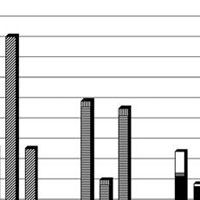
Neural Breathing Pattern and Patient-Ventilator Interaction During Neurally Adjusted Ventilatory Assist and Conventional Ventilation in Newborns
Patient-ventilator interaction appears to be improved with neurally adjusted ventilatory assist. Analysis of the neural breathing pattern revealed a reduction in central apnea during neurally adjusted ventilatory assist use.... read more
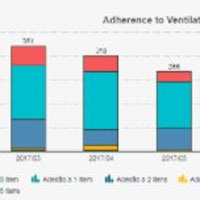
More Than a Tick Box: Medical Checklist Development, Design, and Use
Despite improving patient safety in some perioperative settings, some checklists are not living up to their potential and complaints of "checklist fatigue" and outright rejection of checklists are growing. Problems reported... read more

Human Airway Branch Variation and COPD
Susceptibility to chronic obstructive pulmonary disease (COPD) beyond cigarette smoking is incompletely understood, although several genetic variants associated with COPD are known to regulate airway branch development. We... read more
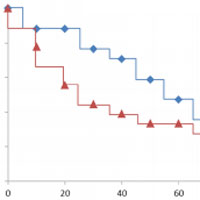
ECMO for Severe Middle East Respiratory Syndrome Coronavirus
Extracorporeal membrane oxygenation (ECMO) use, as a rescue therapy, was associated with lower mortality in MERS patients with refractory hypoxemia. The results of this, largest to date, support the use of ECMO as a rescue... read more
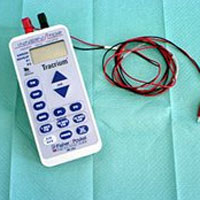
Train Of Four Monitoring
A peripheral nerve stimulator, also called the "train of four", is used to assess nerve function in patients receiving neuromuscular blocking agents (AKA paralytic medications). It is commonly seen used in critical care... read more


